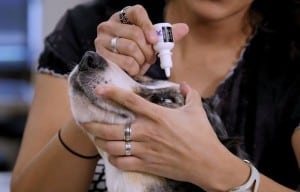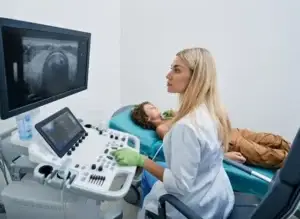Knowing how to give your beloved canine their prescribed dog medication is an important part of keeping your companion happy and healthy, especially when it comes to treating certain conditions and relieving pain. So, what is the best way to give dog meds? If you’ve never done it before, it might seem a perplexing task. Not to fear—by keeping just a few key things in mind, you’ll find that giving a dog a pill or eye drops can be a breeze! https://www.youtube.com/watch?v=zCT-h6ScekU
How to Give a Dog Eye Medication
- First, read all instructions on the medication’s label. Not only do you want to make sure that you’re following all directions on the packaging, but you’ll also want to take note of any special instructions (for example, some dog medicine may need to stay refrigerated).

- If you are given two different types of topical dog eye medications (like an ointment and a separate solution, for example), always make sure that you apply the solution first.
- When applying solutions, remove the cap and place it on a clean environment. Invert the bottle completely, which will allow you to get one full drop when you squeeze the bottle. You don’t need any more than one drop.
- The best way to give dog eye drops is to first grab the dog by the muzzle. If you’re not very experienced with how to put drops in dogs’ eyes, it may be easier to come from behind the animal to create a significantly less stressful experience for both you and the animal.
- Then, pull the dog’s head back so that the animal is looking straight up. Use your thumb (or another available finger) to gently pry back the dog’s eyelid.
- Squeeze one drop of the solution into the dog’s eye. Release both the muzzle and your finger, allowing the dog to blink and spread the solution around. Don’t rub!
- If you want to know how to give a dog eye ointment, just follow the same steps. Again, don’t rub the cream or lotion into the eye; it will spread on its own.
- Make sure to reward with a treat so your pet knows he or she did a good job!
How to Give a Dog a Pill
- The first thing to do when learning how to give a dog a pill orally is to read the directions carefully to find out if the meds need to be taken with a full or empty stomach and act accordingly.
- If the pill needs to be taken with food, hide or wrap it in a treat or other type of food. This is the easiest way to give a dog meds! Luckily, man’s best friends are food-driven creatures, so they should be eager to unwittingly consume their medicine.
- If the dog medication requires an empty stomach, you may need to do it by hand. Here is how to give dogs pills on an empty stomach:
- Grip the top of the muzzle, lift the dog’s mouth so it is wide open and drop the medication inside. While not as immediately easy, this can be done quickly and efficiently with a little bit of practice—especially if there are treats involved.
- Make sure the dog swallows and doesn’t spit the dog pill out. A good sign that the pill has been swallowed is when the animal starts licking its nose.
- Again, be very conscious to always reward medication time with yummy treats to reinforce good behavior.
Giving a dog any type of medication doesn’t have to be a stressful experience. Even if you hit some bumps along the road, learning how to give dogs pills and other meds will go a long way towards keeping them as happy and as healthy as can be for as long as possible. Remember, practice makes perfect—and treats are your friends!
Becoming a Veterinary Technician
If you’re a dog lover and would be interested in a career working with animals, consider becoming a veterinary technician. You may have heard the profession also referred to by a different name: Vet Techs. These valued individuals are integral in providing support to a veterinarian throughout the entire clinical process. You’ll get to work with dogs (and cats and other pets) on a regular basis and you’ll also get the reward of knowing you play a pivotal role in their lives. A large part of being a veterinary technician involves helping to treat various types of injuries, helping to diagnose certain illnesses and diseases, and more. If you’d like to find out more information about becoming a veterinary technician, or if you’d like to take the bold first steps on a new career path, contact us today to find out more about the veterinary technician programs at Carrington College.



